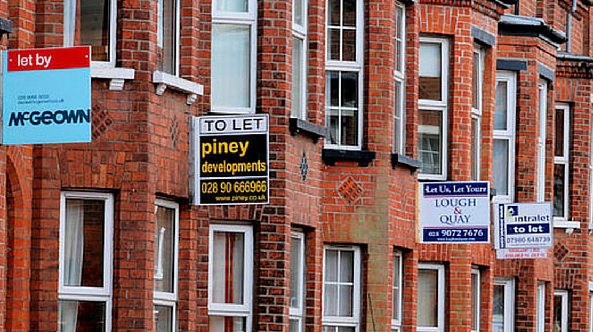There are many reasons why diversifying your property portfolio is a good idea, and many ways to do it. Are HMOs the ideal addition to your investments?
When choosing where to invest your hard-earned cash, it’s always wise to try not to put all your eggs in one basket. Even if you want to stick with the property sector, within this there are many different options to keep your portfolio as diverse as possible and manage your risk levels.
Like any market, property values will fluctuate over time, with different cycles representing different levels of risk. Because the balance between demand and supply is relatively stable across the housing market as a whole, investors can enjoy a level of protection against any vast volatility – unless you make a very ill-advised purchase – but there are ways of hedging your bets.
How can you diversify within property?
Clearly, if you can invest in more than one property, your risk levels are generally reduced. If something goes wrong with one property, you still have another to fall back on. This is further enhanced if you can invest in different locations. You can achieve top rental yields in places like Liverpool and Manchester right now, but if you had invested in London a few years ago you might have made big capital appreciation gains, too. Various parts of the UK are subject to peaks and troughs in supply and demand, and it’s the key to achieving the best returns.
Choosing different property types is another way of diversifying your portfolio. From traditional buy-to-let, to off-plan new-builds, to student rentals and houses in multiple occupation (HMOs), you can ride the waves of change within the housing market by having a good selection across the board.
The benefits of investing in an HMO
Where a rental property is occupied by three or more people forming more than one ‘household’ (a household being a single person or members of the same family), with shared toilet, bathroom or kitchen facilities, this is classed as an HMO. A ‘large HMO’ is where there are five or more occupants forming more than one household with shared facilities. There are numerous benefits to choosing an HMO for your next property investment.
Better yields: You can generally expect to achieve better rental yields with an HMO. In recent research it was found that the average UK HMO reaps a 6.3% yield, compared to 5.5% for a standard rental. This is most pronounced in the north-west, with Manchester, Liverpool, Preston and Bolton all offering top rental returns.
Reducing void periods: The more tenants you have, the more reliable your income. HMOs are occupied by three or more people who are not related, meaning they all have separate tenancy agreements. When one tenant leaves, while you lose the rent for that room, you still have income from the other tenants, so void periods have much less impact.
Less impact from arrears: Like with void periods, if one tenant gets into arrears, having multiple tenants means the effect of this will be less. By contrast, in a traditional buy-to-let there is only one rental payment, so if that falls behind then that could mean your entire income from that property is lost.
Growing tenant demand: It goes without saying that without demand, your property investment is likely to fall flat. HMOs are seeing a revival in popularity as the UK’s housing market and the way people live changes, with more young professionals wanting to live together in more affordable accommodation for longer. If you choose the right area, demand for rooms in an HMO will be high.
Type of tenant: HMOs tend to attract young professional tenants who are looking for good value, sociable homes close to places of employment and transport options. This tenant type is sometimes considered one of the most desirable, as they tend to be hassle-free, with less demands than families or older tenants. Because they are often recently graduated, they are likely to have parents acting as guarantors, which can add an extra layer of security.
Things to consider
While there are major advantages to investing in an HMO, there are some important factors to take into account before you take the plunge.
Higher initial cost: Buying a larger property with more bedrooms, particularly one that already functions as an HMO, can be more costly, although the returns will offset this for most investors. It is possible to get specialist mortgages for this type of property, and many investors opt to use a broker to secure the most competitive rates.
Getting a licence: If you have a large HMO (with five or more unrelated tenants), you must now obtain a licence to operate legally. The cost of this will depend on where the property is. Some areas are also subject to additional or selective licensing schemes which means that even smaller HMO owners must hold a licence. As councils regularly review various areas for licensing, it is important to keep an eye on whether or not this applies to you.
Bedroom sizes: Not every property can work as an HMO. Since October 2018, bedrooms in an HMO must be at least 6.51 square metres for an adult, 10.22 square metres for two adults, and 4.64 square metres for children under 10. These required room sizes can be altered by councils if they see fit, so check what the rules are in your local area.
Property management: While you might manage to operate your traditional buy-to-let yourself as a sideline, keeping on top of an HMO presents extra challenges. Having separate contracts for each tenant, as well as finding tenants and dealing with individual issues, can be more time consuming. Management companies can deal with this side of things, so investors should factor this into their bottom lines.
The way forward in 2020
As we move into 2020, most industry experts expect the property market to begin to pick up from the lag of 2019. Keeping an eye on changing trends and moves within the housing sector, including location and property type, can help you maximise your investments, and HMOs can be a great way of diversifying your assets.
At BuyAssociation, we offer a range of property investment opportunities, including HMOs and off-plan developments. Browse our investments page to see a selection of the products we have available, or sign up for free to access more opportunities.










